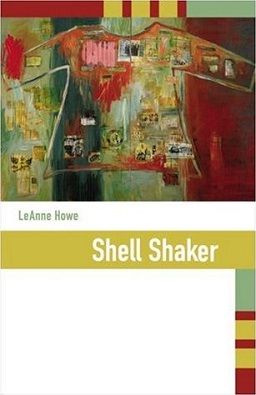
Bearheart: The Heirship Chronicles is a 1990 novel by Gerald Vizenor; it is a revised version of his 1978 debut novel Darkness in Saint Louis Bearheart. The novel is a part of the Native American Renaissance and is considered one of the first Native American novels to introduce a trickster figure into a contemporary setting, even as he drew on trickster traditions from various Native American tribes, such as Nanabozho (Anishinaabe) and Kachina (Pueblo). [1] [2]

Gerald Robert Vizenor is an Anishinaabe writer and scholar, and an enrolled member of the Minnesota Chippewa Tribe, White Earth Reservation. Vizenor also taught for many years at the University of California, Berkeley, where he was Director of Native American Studies. With more than 30 books published, Vizenor is Professor Emeritus at the University of California, Berkeley, and Professor of American Studies at the University of New Mexico.

A debut novel is the first novel a novelist publishes. Debut novels are often the author's first opportunity to make an impact on the publishing industry, and thus the success or failure of a debut novel can affect the ability of the author to publish in the future. First-time novelists without a previous published reputation, such as publication in nonfiction, magazines, or literary journals, typically struggle to find a publisher.
The Native American Renaissance is a term originally coined by critic Kenneth Lincoln in the 1983 book Native American Renaissance to categorise the significant increase in production of literary works by Native Americans in the United States in the late 1960s and onwards. A. Robert Lee and Alan Velie note that the book's title "quickly gained currency as a term to describe the efflorescence on literary works that followed the publication of N. Scott Momaday's House Made of Dawn in 1968". Momaday's novel garnered critical acclaim, including the Pulitzer Prize for Fiction in 1969.
The novel follows the adventures of Proude Cedarfair as he leads a group of mixedbloods on a pilgrimage across a postapocalyptic, postindustrial United States that has run out of gas. [1] [3] This novel demonstrates several of Vizenor's key concepts: his use of trickster figures; his use of mixedblood (or "crossblood") Indian characters in a non-tragic way; [3] his version of magical realism—what he calls "mythic verism"; [1] and his conception of "postindian" identity; [3] and his use of parody, as in the way the novel parodies both Chaucer's The Canterbury Tales and Frederick Jackson Turner's "Frontier Thesis". [3]

The Canterbury Tales is a collection of 24 stories that runs to over 17,000 lines written in Middle English by Geoffrey Chaucer between 1387 and 1400. In 1386, Chaucer became Controller of Customs and Justice of Peace and, in 1389, Clerk of the King's work. It was during these years that Chaucer began working on his most famous text, The Canterbury Tales. The tales are presented as part of a story-telling contest by a group of pilgrims as they travel together from London to Canterbury to visit the shrine of Saint Thomas Becket at Canterbury Cathedral. The prize for this contest is a free meal at the Tabard Inn at Southwark on their return.
The Frontier Thesis or Turner Thesis, is the argument advanced by historian Frederick Jackson Turner in 1893 that American democracy was formed by the American frontier. He stressed the process—the moving frontier line—and the impact it had on pioneers going through the process. He also stressed results, especially that American democracy was the primary result, along with egalitarianism, a lack of interest in high culture, and violence. "American democracy was born of no theorist's dream; it was not carried in the Susan Constant to Virginia, nor in the Mayflower to Plymouth. It came out of the American forest, and it gained new strength each time it touched a new frontier," said Turner.





